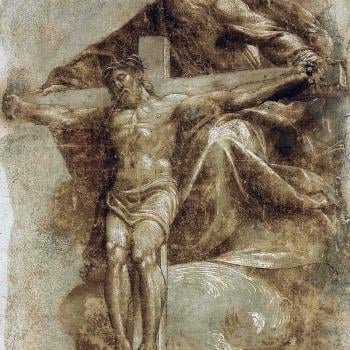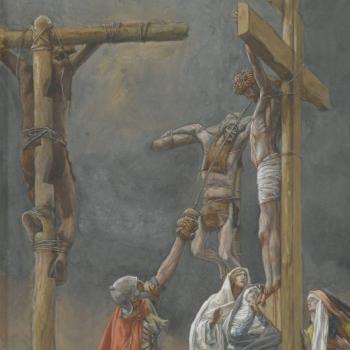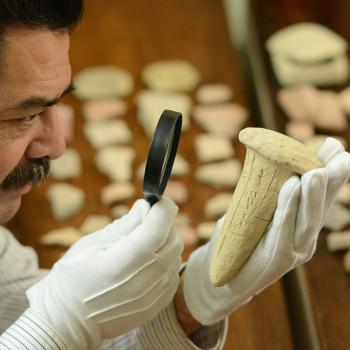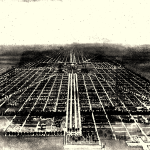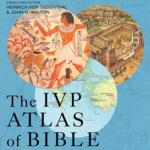
This is the second entry on the Season of Creation, which many ecclesial traditions celebrate every year. On September 1st, which marks the start of the Season of Creation, we honored World Day of Prayer for the Care of Creation. Church liturgies for the Season of Creation vary from year to year in highlighting which aspects of creation to celebrate on particular Sundays (Refer here for an example of the Season of Creation liturgies for various years). In light of such variance, I have decided to highlight certain dimensions of the creation featured in the Genesis creation account, beginning with light.
I often take light for granted day and night. All it takes for me to remember how much I need light is for a power outage to occur and the house goes dark. It can be very destabilizing, especially if one does not have a working flashlight to hand. The Genesis creation narrative portrays the world as formless and void, and without any light: “In the beginning, God created the heavens and the earth. The earth was without form and void, and darkness was over the face of the deep” (Genesis 1:1-2; ESV). The closest I came to experience anything of this envisioned sort of darkness was during a summer vacation from college many years ago when several friends and I decided to stay overnight in a cave—far away from the cave entrance. The cave was cold, damp, and completely dark—once we turned off the flashlights. Of course, I was not alone, as my friends and some bats shared the cave with me. So, I cannot cross the infinity of difference between what I experienced in that cave and what the Genesis account suggests.
Given that cave man context, I greatly appreciate that the Genesis account of creation begins with God declaring “Let there be light.” While I could turn on my flashlight, once I fumbled around to locate it in the dark, my light would eventually phase out due to the battery’s limited lifespan. In my case, I was dependent on another source for light. In fact, I always am. In contrast, God is the source of all light and indeed all energy, according to Genesis. God made everything: “In the beginning, God created the heavens and the earth” (Genesis 1:1; ESV). One might think that given our dependence on light from sources external to ourselves at every turn, whether it be a flashlight, a lamp plugged into an outlet, headlights, or the sun, moon and stars in the sky, we would never take light for granted. But we so often do, that is, until our light sources burn out.
We read reports of how someday in the very, very distant future the sun will burn out. I can only imagine what that would entail for life here on earth or elsewhere in our solar system. The sun is essential for illumining the day, not to mention that it casts its glow on the moon at night. We read other reports of how smog blocks the sun’s rays, which impacts negatively our employment of solar energy. We read still other reports of how air pollution has partly destroyed good ozone in the upper atmosphere: “Called stratospheric ozone, good ozone occurs naturally in the upper atmosphere, where it forms a protective layer that shields us from the sun’s harmful ultraviolet rays. This beneficial ozone has been partially destroyed by manmade chemicals, causing what is sometimes called a ‘hole in the ozone.’”
We should not take the sun for granted, since it provides illumination, heat, and is essential to growth and development. We should also be careful not to take the sun for granted when it comes to risks associated with such health problems as skin cancer and sun stroke. Along with the sun, we should be sure to treasure natural light that breaks through the darkness in so many ways.
Light features prominently in the Genesis account. Of course, we find God’s declaration of “Let there be light” and “Let there be lights” on the first and fourth days respectively:
And God said, “Let there be light,” and there was light. And God saw that the light was good. And God separated the light from the darkness. God called the light Day, and the darkness he called Night. And there was evening and there was morning, the first day (Genesis 1:3-5; ESV).
And God said, “Let there be lights in the expanse of the heavens to separate the day from the night. And let them be for signs and for seasons, and for days and years, and let them be lights in the expanse of the heavens to give light upon the earth.” And it was so. And God made the two great lights—the greater light to rule the day and the lesser light to rule the night—and the stars. And God set them in the expanse of the heavens to give light on the earth, to rule over the day and over the night, and to separate the light from the darkness. And God saw that it was good. And there was evening and there was morning, the fourth day (Genesis 1:14-19; ESV).
Light functions significantly throughout the creation account. The declaration of light being the first of God’s creative works is no doubt essential for the temporal ordering of each day, including morning and evening. In fact, for John Walton, the declaration of light on the first day of creation has nothing to do with physical light, but with time: “Day 1 speaks of time. Even if one thought it was about light, we cannot assume a physicist’s concept of light—we have to think like ancient Israelites. Day 1 includes nothing material.”
My daughter does not take light for granted. She loves a vibrant sundown and draws it to my attention. Often lost in my thoughts, I would easily miss the colorful pageantry of the night sky. A NASA astrophysicist I know does not take light for granted. She and other astrophysicists and astronomers I have met, no matter how scholarly and dignified, reflect the fervent and playful curiosity of children when they gaze in raptured wonder at stars in the night sky. Vincent Van Gogh, whose post-impressionist art I cherish, boldly, vividly, and symbolically portrays nature and even the night sky in ways that reflect in human terms something of the grandeur and mystery of the Genesis creation account. As he himself remarked in a letter to his sister Willemien, Van Gogh was “very sensitive to color and its particular language, its effects of complementaries, contrasts, harmony.” As he wrote to his brother Theo, “Painters understand nature and love it, and teach us to see.” Certainly, we find all these traits in his painting, The Starry Night (1889).
Mention was made above of how Van Gogh presented symbolic imagery in his post-impressionist paintings. The Genesis account appears to express a fair degree of symbolism theologically conceived. From a Christian vantage point, St. Ireaneus, whom the Roman Catholic church honors on June 28 and whom the church in the Byzantine tradition honors on August 23, is one of the Christian faith’s premier theologians of creation. He did not take nature or creation for granted, but celebrated it robustly, in his orthodox defense against Gnosticism. For Irenaeus, it would appear that God is the great artist and artisan who does everything through his two hands (Refer here, for example), who for Irenaeus signify the Son or Word and the Spirit. The early church with its symbolic and typological reading of the Hebrew Scriptures finds Trinitarian imagery in Genesis 1, where the Spirit of life hovers over the waters (Genesis 1:2) and God brings into existence all of creaturely life through his word or Word (See Genesis 1:3 for example: “And God said, ‘Let there be light,’ and there was light”). Surely, John’s Gospel has this passage in mind, when we find the following words at the outset of the prologue: “In the beginning was the Word, and the Word was with God, and the Word was God. He was in the beginning with God. All things were made through him, and without him was not any thing made that was made. In him was life, and the life was the light of men. The light shines in the darkness, and the darkness has not overcome it” (John 1:1-5; ESV). As fellow church father Clement of Alexandria highlighted, we should take Jesus, “the Sun of righteousness,” to heart. He confers great benefits on humanity through his appearance.
In succeeding posts on the Season of Creation, we will have opportunity to draw attention to the Son as well as the Spirit, and how a Trinitarian account of creation does not take the creation for granted. Just as we should not take light for granted, so we should not take the light of life (John 1:4), the light of the world (John 8:12), for granted. He who is the light, the solid rock, the one who through the Spirit pours out the water of life, he who is the lion and the lamb, who always works to bring us rest through the dove who is the Spirit of life, he exhorts his people to cherish the creation during the Season of Creation and throughout the year.



